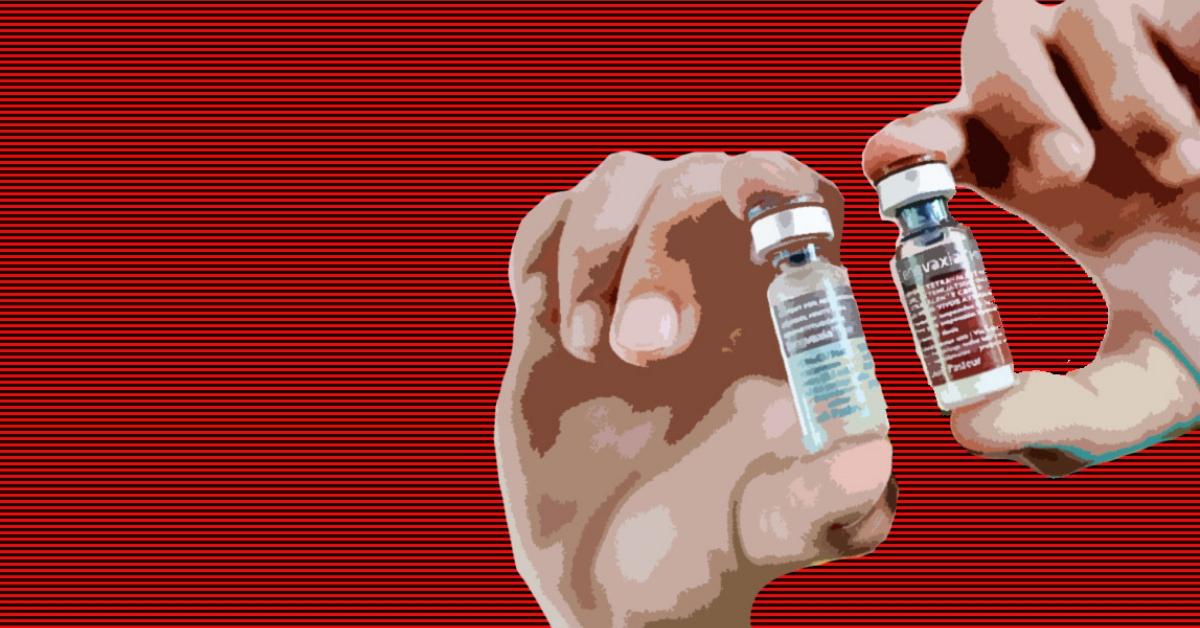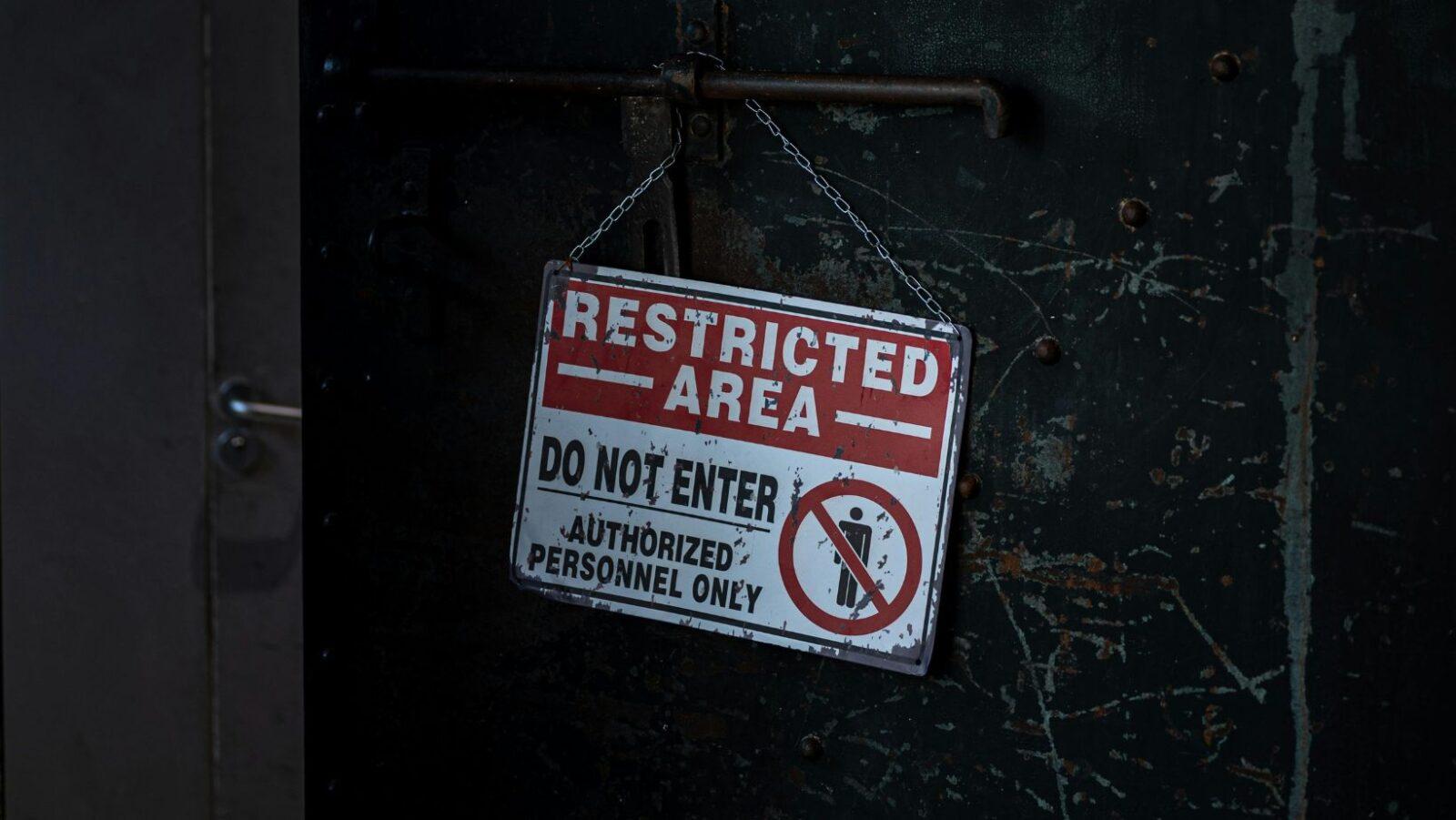In the second installment of a two-part series, science communicator Carina Laroza examines how the handling of the Dengvaxia controversy in the Philippines may have shaped the public’s perception of the vaccine.
To read the first installment of this series, click here.
The cost of lack of communication: Public distrust
With government officials busy pointing fingers and mass media reporting news with arguably equivocal headlines, millions of Filipinos were desperate for answers.
Amidst all of these, there seemed to be no efforts from authorities to assuage the concerns of the public about Dengvaxia. Thus, there was a distinct lack of trust and understanding not only concerning the dengue vaccine, but the whole immunization program of the country.
Public distrust towards science has been a concern, even since the 1990s. However, the public must understand science to meaningfully contribute to scientific affairs and get a better grasp of how today’s scientific discoveries can impact the future.
Unfortunately, due to the lack of communication initiatives from the government regarding this issue, the public had to make do with information they got from exaggerated news articles, as well as opinions from non-experts whose data came from misleading sources as well.
As mentioned previously, the confidence level towards vaccines before the controversy was very high. Coverage rates for fully immunized children even reached up to 90%; now, however, that number has dropped to 69% ever since the Dengvaxia scare. It was believed that the solution was in the information deficit model, which claims that public distrust will decrease when we increase scientific literacy. To their credit, DOH did try an information campaign in schools by setting up posters to raise awareness on dengue and Dengvaxia among the students, parents and teachers. Online FAQ pages from WHO, DOH, and Sanofi were also made available to give full details about the vaccine.
But a year after the controversy, immunization rates have still not increased, and parents are still afraid of the government’s vaccination programs.
Since one-way communication strategies are not working, the government could have focused on personally reaching out to the public to mitigate the issue. Communicating face-to-face can avoid misinterpretation which is occasionally the case when communicating electronically. We are dealing with the lives of millions of children, and mothers are on the forefront of this war, as they are the ones easily affected by fear due to their instinct to protect. If time had been spent sitting down with the parents involved to be able to directly answer their concerns and explain how the vaccine works, instead of concentrating solely on finding who to blame (and relying solely on TV, posters, and online articles for information dissemination), the issue could have been resolved before it could grow into a nationwide panic.
Half full or half empty? The reaction to Sanofi’s announcement
Sanofi did have an unclear explanation of the vaccine’s risks in their announcement, which they only clarified several days later. Sanofi’s follow-up statement was as follows:
“[I]t is estimated that only 1 in 800 of all dengue infections could lead to a severe infection, and the increased risk identified from the new analysis translated to 2 additional cases of severe dengue out of 1000 previously dengue-uninfected people vaccinated over 5 years of follow-up… and out of the very few cases of severe Dengue in a group of around 18,000 people vaccinated in the clinical trials, all fully recovered.”
The public’s understanding of science has always been crucial in countering irrationality. Those who lack the basic knowledge to pursue inquiries about the world tend to be disadvantaged, especially when it comes to analysing risk. Surely, Sanofi being unclear and late with their updates and the government not being proactive enough to monitor and coordinate with the pharmaceutical company had much to do with this particular issue.
Even though there were risks associated with the vaccine, the government and other authorities failed to convey, among others, how the benefits could outweigh the potential risks of the vaccine. Figuratively speaking, the focus was on “seeing the glass half empty.” In contrast, Brazil, which also procured the vaccine, is facing the risk with a more systematic approach. Citizens who have had the disease are encouraged to take the vaccine, and news channels are emphasizing its effectiveness until other conclusive findings are released.
The Philippines is one of the countries with high burden of dengue, and with the government suspending the vaccination program, millions of people who have had the disease are at risk of contracting dengue again, instead of benefiting from the vaccine.
The heart of the controversy
Though there were other variables that contributed to this issue, at the heart of this controversy is the lack of effective communication among the parties involved: the government, mass media, health experts, Sanofi, and the public.
Scientists are believed to be the “ultimate arbiters of truth.” In 1968, German sociologist Niklas Luhmann wrote that trust in science involves relying on a third-party that has specialized knowledge to understand the complexity of the world. Perhaps, the failure of the public to understand science is the failure of the government to be better at public relations and communications. Without the voice of experts reassuring the public, matters such as this would be difficult to cope with.
It is evident how the inability of experts to effectively communicate with the public and the inability of the public to understand and base their conclusions according to scientific data sparked a controversy that could severely damage public health.
It is not Dengvaxia that kills people. Rather, it is the politicization of the vaccine, the lack of proper communication, and the inadequate understanding of the public that continues to put millions of lives at stake.–MF
Note: The views expressed in this essay are based on the author’s opinions, experiences, and research, and do not necessarily represent the views of this website.
Cover Photo: AFP
References
- Aicher, T. (2016) Speaker on Public Distrust of Science. Carlsbad: University Wire.
- Bodmer, W. (1985) The Public Understanding of Science. Report of a Royal Society ad hoc Group endorsed by the Council of the Royal Society. London: Royal Society. Available from: http://royalsociety.org/uploadedFiles/Royal_Society_Content/policy/publications/1985/10700.pdf
- Brake, M. and Weitkamp, E. (2010) Introducing Science Communication. United Kingdom: Palgrave Macmillan.
- Crisostomo, S. (2018) DOH sets information campaign on Dengvaxia. Available from: https://www.philstar.com/headlines/2018/01/07/1775352/doh-sets-information-campaign-dengvaxia [Accessed 18 November 2018]
- Department of Health (2017) DENGVAXIA: Frequently Asked Questions answered by DOH. Available from: https://www.facebook.com/assortedge/photos/?tab=album&album_id=1423872644405659 [Accessed 2 January 2019]
- Eng, K. (2018) What went wrong with the breakthrough dengue vaccine? Available from: https://fellowsblog.ted.com/what-went-wrong-with-the-breakthrough-dengue-vaccine-cf8519cb90c8 [Accessed 18 November 2018]
- Gregory, J. and Miller, S. (1998) Science in Public. New York: Plenum Press.
- Jasanoff, S. (1996) Civilization and madness: the great BSE scare of 1996. Public Understanding of Science. 6(3), pp. 221-232
- Larson, H., Schulz, W., and Simas, C. (2017) A tale of two countries: The dengue vaccine saga. Available from: https://www.vaccineconfidence.org/17457-2/ [Accessed 2 January 2019]
- Luhmann, N. (1979) Trust and Power. New York: Wiley.
- Sanofi (2017b) Information update on Dengvaxia. Available from: https://www.sanofipasteur.com/-/media/Project/One-Sanofi-Web/Websites/Global/Sanofi-Pasteur-COM/Home/en/media-room/docs/SpecificInformation_Dengue_EN.pdf [Accessed 2 January 2019]
- Short, D. (2013) The public understanding of science: 30 years of the Bodmer report. School Science Review. 95 (350), pp. 39-44.
- Tomacruz, S. (2018b) A YEAR AFTER DENGVAXIA: Immunization drops, measles outbreaks soar. Available from: https://www.rappler.com/newsbreak/in-depth/217912-dengvaxia-one-year-after-outbreaks-series-part-1 [Accessed 2 January 2019]
- Wilkinson, C. and Weitkamp, E. (2016) Creative Research Communication: Theory and Practice. United Kingdom: Manchester University Press.
- World Health Organization (2017) Updated Questions and Answers related to the dengue vaccine Dengvaxia® and its use. Available from: https://www.who.int/immunization/diseases/dengue/q_and_a_dengue_vaccine_dengvaxia_use/en/ [Accessed 2 January 2019]
Author: Carina Laroza
Carina Laroza is a science communication advocate at Scienkidfic Xplorers, an organization dedicated to developing scientific literacy within communities through increasing awareness, appreciation, and curiosity towards Science, Technology, Engineering, & Math (STEM). She is also currently taking her Masters in Science Communication at the University of the West of England under the United Kingdom’s Chevening Scholarship program.







